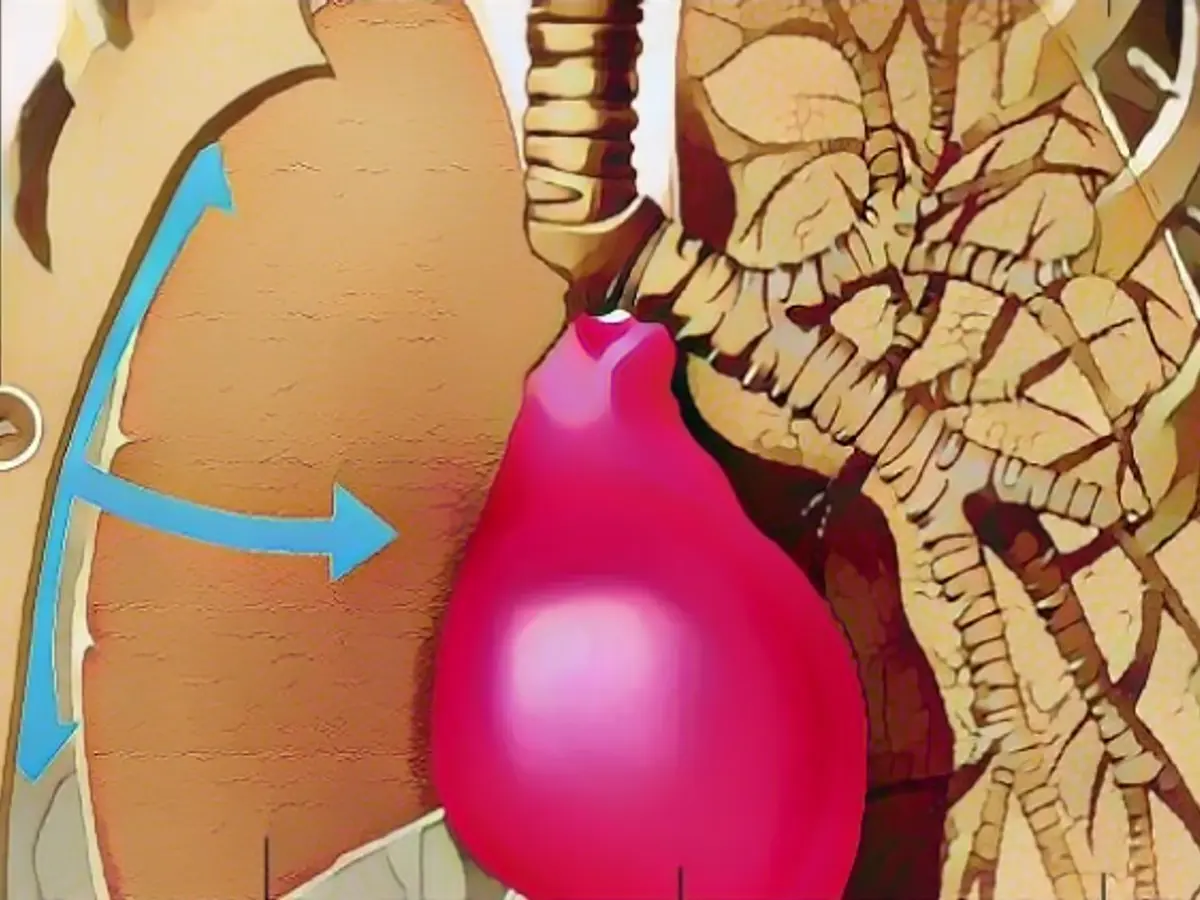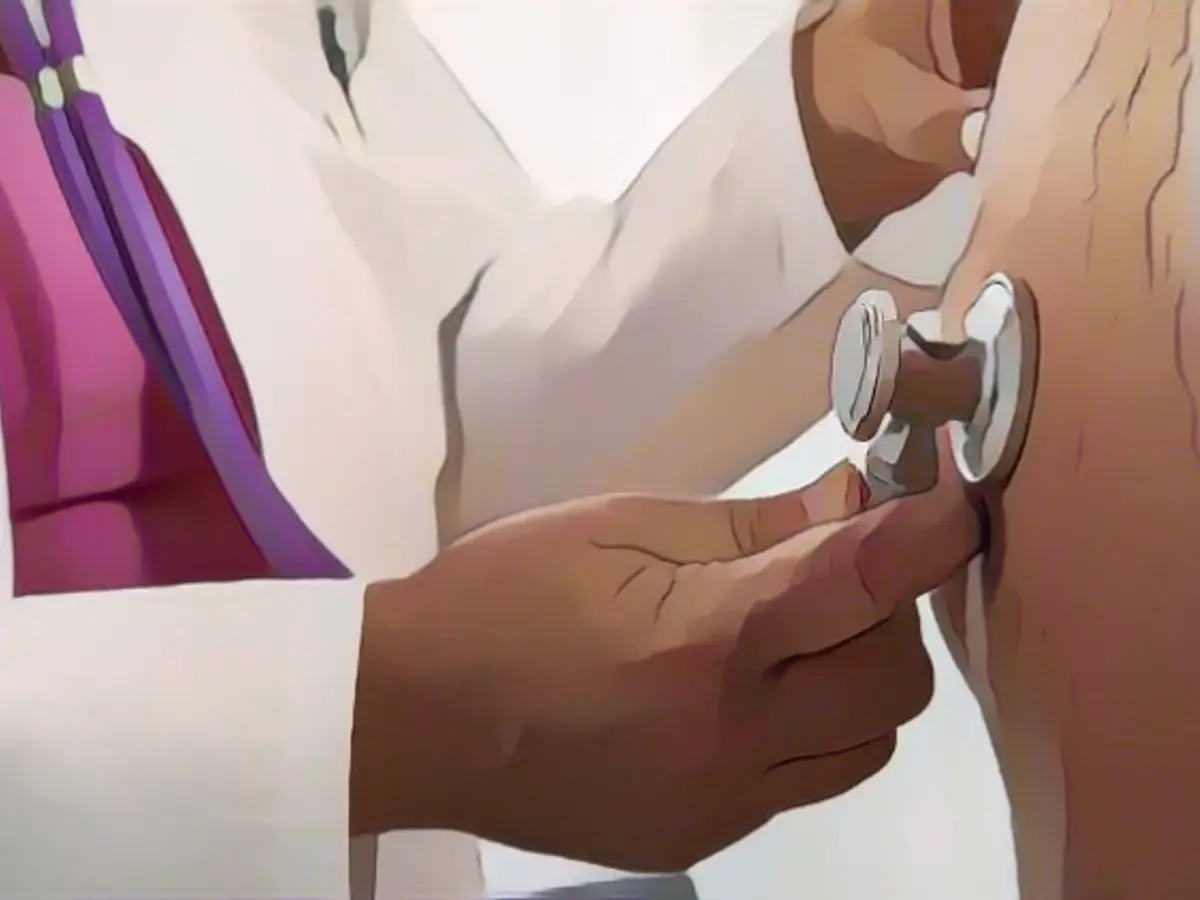The mysterious male condition spontaneous pneumothorax
A pneumothorax can cause the lungs to collapse suddenly and end up in the emergency room for those affected. It is often triggered by accidents, but sometimes also spontaneously, without any signs. Men are particularly frequently affected. There is no clear answer to the causes.
A completely unexpected day in Berlin in the summer: I had been suffering from shortness of breath for a few weeks and had also developed a dry cough. "Just for a quick check-up", I entered a GP's surgery in the Schöneberg district with few worries and complained about my suffering. Could my problems be due to the cortisone therapy I had to take for a foot injury? "No, that doesn't make sense," the doctor replied, pondering my condition at her desk. Finally, she picked up her stethoscope and listened to my lungs. "Breathe in deeply" - the left side of my lungs were working. So far, so good. But then came the rude awakening.
The doctor started to wonder about the right side and shook her head slightly. I kept taking deep breaths. But: "There's nothing there," she said with a slightly horrified look, went back to her desk and added: "I don't want to scare you" - presumably knowing that a sentence like that would cause even more worry. "It could be a pneumothorax. The right side of your lung could have collapsed. Depending on the type, this can be life-threatening." I was given a referral and went straight to the emergency room of the neighboring hospital.
Everything went very quickly in the emergency room. An X-ray was taken within a few minutes. After a doctor examined it, he confirmed: "Your family doctor had the right nose". He strongly recommended that I get help. And I immediately agreed. I took off my T-shirt and lay down in a hospital bed in the emergency room. In an outpatient operation, I was immediately given a chest drain, i.e. a tube past my ribs and into the "pleural space".
The insidious spontaneous pneumothorax
But what exactly had caused my lung to collapse? It was triggered by air that had entered the pleural space (also known as the pleural cavity) between the lung and the pleura and released the negative pressure that keeps the lungs expanded.

Air can escape into the pleural cavity as a result of injuries, such as a rib fracture. The broken bone punctures the surface of the lung and air enters the pleural cavity."An accident is the most common cause of pneumothorax. The soccer match on Sunday morning, a collision with the onset of shortness of breath. An impact trauma in which the lung is injured," says Torsten Bauer, head physician at the Clinic for Pneumology at the Helios Clinic in Berlin, to ntv.de.
In my case, however, something else was the cause. There is another insidious type of the disease, without an accident: the spontaneous pneumothorax, with no signs whatsoever. The milder version of this can heal on its own, but in severe cases the lung suddenly collapses out of nowhere one day. The result: shortness of breath or chest pain.
This is usually triggered by small, air-filled blisters. "These bubbles are often located at the upper edge of the lungs and can burst spontaneously," says Bauer. The air then escapes into the pleural cavity.
Hot case of tension pneumothorax
And as if that wasn't enough, in rare cases a tension pneumothorax can also occur - this was the case for me. "Here, not only does air enter the gap, but it is pumped in and the other lung is squeezed shut." This particular form can be life-threatening and, according to Bauer, is always treated by an emergency doctor, even on site. However, I didn't seek medical attention for a long time even when I had acute shortness of breath - because I believed it was a side effect of cortisone and my orthopaedist confirmed this - a mistake.
In principle, however, people who suffer a pneumothorax are not usually in mortal danger. Bauer refers to the "principle of double organs" that nature has provided for human lungs. "If they pierce the left, nothing happens on the right because the organs are completely separated. It is extremely rare for both lungs to collapse - without an external event," says the head physician at the Heckeshorn Lung Clinic at Helios Klinikum.
Men are hit particularly often
Spontaneous pneumothorax affects men significantly more often than women. There are around seven cases per 100,000, compared to only one or two in women. Tall, slim men between the ages of 18 and 35 are particularly frequently affected. Medicine cannot really explain this. According to Bauer, it can only be "intuitively deduced". He points out, for example, that slim people have less of a buffer for impact trauma. "Tobacco or marijuana use significantly increases the risk of a primary spontaneous pneumothorax/lung collapse," according to the European Lung Foundation. In addition, men generally have a longer and narrower chest than women. This shape can lead to greater stretching of the lung tissue, particularly in the tips of the lungs, which could encourage the formation of air sacs.
The unfortunate thing is that pneumothorax cannot be prevented. There is no medication or similar. However, there is no need to live in constant fear that the lung will spontaneously collapse at some point. Some patients heal with a little rest, while others only need to have a chest drain inserted for a few days - even if this is associated with pain. "Eight out of ten patients can heal without surgery," estimates Bauer. However, there is a risk that a pneumothorax will recur - in which case surgery is usually performed to eliminate the problem as permanently as possible.
In my case, too, a conservative treatment method without surgery was tried first. But without chest drainage, my right lung collapsed again. Only an operation could help to remove the blisters for good. I was in hospital for a total of two weeks and could only move a little during this time. I also had to take painkillers all the time. The operation under general anesthetic took about an hour. Afterwards, patients stay in hospital for a few days before going home. I was left with three scars and was not allowed to exercise for at least four weeks. I was strongly recommended to be followed up by a pulmonologist.
What remains is a certain feeling of injustice. A disease that particularly affects younger, slim people, who are often also sporty - why does this happen? And why can't it be prevented?
Research into pneumothorax has been going on for many decades, and the medical procedure for treating it is routine for doctors. "Back in the days of tuberculosis, an artificial pneumothorax was created for better healing," says Bauer. Thomas Mann talks about this in his 1924 novel "The Magic Mountain". Only later were tuberculosis drugs researched. Even today, it is still often not possible to give a clear answer as to the causes of a spontaneous pneumothorax. It is uncertain whether this will change in the future. In hospitals, these patients are the norm, even if they are not all that common. And that will remain the case.
After my diagnosis of a possible pneumothorax, I began to research the condition and its causes. I was surprised to learn that among the risk factors for spontaneous pneumothorax is a history of illness, specifically tuberculosis. Even though the use of tuberculosis drugs is now common, it is still possible for individuals with a past history of tuberculosis to develop this condition.
Furthermore, I discovered that the treatment for a severe form of pneumothorax, tension pneumothorax, often involves the use of medicine, specifically medication to relieve pain and manage any complications that may arise. In my case, I was given painkillers to help with the discomfort caused by the chest drain. However, the most effective treatment for tension pneumothorax remains timely medical intervention and treatment by an emergency doctor, whether on site or in the hospital.
Source: www.ntv.de







